Learn Itsekiri Language
From the leading expert and teacher of the Itsekiri language and culture
ITSEKIRI ORTHOGRAPHY ( IKONI-OFO TI ITSEKIRI )
Itsekiri orthography ( Ikoni-ofo ) is very rich in content and structure of grammatical syntax. It is composed of seven (7) oral vowels ( EGHAN-ABEDE MEJE); five (5) nasalized vowels ( EGHAN-INMON-ABEDE MARU ); Eighteen (18) primary consonants ( IGBASA-ABEDE EJOLEGWA ); and six (6) secondary consonants (OKEJI-IGBASA-ABEDE MEFA ). All these have their roots from the alphabets ( ULI-ABEDE ) of twenty-five (25) letters ( ABEDE MARU-LE-OGUN ). The orthography therefore, rotates on these four fulcrums of thirty-six (36) letters, upon which the entire writings in Itsekiri Language are based.
Our target audience for this ITSEKIRI LANGUAGE STUDY is mostly those Itsekiri out there who can’t speak and write the language at all or those who can speak but can’t write properly.
It is also meant for those who can speak and write properly, but still need the lecture to rejig their intellectual acumen, which might bring to remembrance most of their lost Itsekiri vocabularies and old terminologies
for them to also be in constant tune with the Itsekiri usage for modern technologies.
What the study entails
THE MEANING AND ORIGIN OF LANGUAGE
- The New Lexicon Webster’s Encyclopedic Dictionary of the English Language, defines it variously, thus: (1) “the organized system of speech used by human beings as a means of communication among themselves”; (2) “any such differentiated system as used by a section of the human race, the English language”; (3) “any apparently organized system of communication, the language of animals.”

